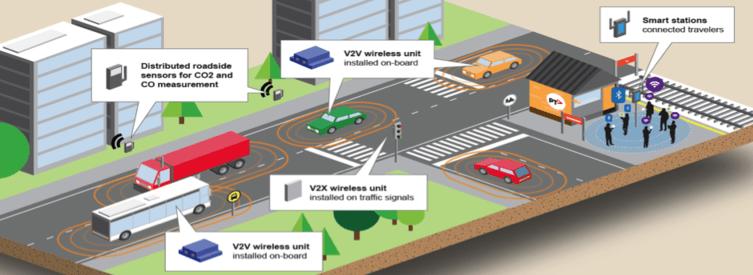It’s no secret that our growing cities are crying out for smarter, greener and safer transport solutions, and a world-first Melbourne experiment aims to deliver just that.
Described as a ‘living laboratory’, the National Connected Multimodal Transport Test Bed (NCMT) is expected to help engineers develop a highly integrated multimodal transport system, making travel more efficient and sustainable.
Led by the University of Melbourne, the NCMT will bring together the data generated by thousands of sensors and wireless units, as well as traffic, public transport and parking data to investigate ways to relieve pressures created by population growth and traffic increases.

The test bed area is located across 5 km² in the busy inner-suburban area north of Melbourne’s CBD, bounded by Alexandra Parade, Victoria Street, Hoddle Street and Lygon Street. The project is expected to run for the next decade.
The system will combine traffic data from VicRoads, transport and Myki data from Public Transport Victoria, parking data from the City of Melbourne and live traffic updates to create one big ‘brain’,
according to Dirk Van de Meerssche, Sales and Marketing Director and Strategic Business Advisor at Cubic Transportation Systems, the supplier of the back office multi-modal transport management platform being used in the test bed.
He says the program partners (of which there are 17) will then perform big data analytics, modelling possible congestion-busting scenarios and ultimately undertake predictive analysis to identify strategies that could improve the overall journey across multiple models of transport.
Delegates to
IPWEA’s International Public Works Conference will hear Professor Majid Sarvi, University of Melbourne’s Professor in Transport for Smart Cities, discuss how the ground breaking NCMT Test Bed project could be a path to autonomous transport.
Sarvi says the NCMT Test Bed allows for the testing connected transport in a real world and dynamic environment, ensuring the safety and rigor of proposed solutions and the best possible real-world outcomes.

He says the role that connected transport will play in our future cities cannot be overestimated.
“It is important to know that connected transport is a significant opportunity and it will change the landscape of transport engineering and the way we perceive cities,” he says.
Known as the holy grail of transport engineering, connected transport is achieved when the various modes of transport are combined to operate as one seamless system, delivering a journey that is a close as possible to a ‘door to door’ service.
“A major challenge for contemporary cities is how to maintain and/or improve levels of mobility, accessibility and sustainability, considering the massive growth in urban populations, the depreciation of ageing infrastructure and what has been limited traditional transport infrastructure funding,” Sarvi says.
He explains that connected transport will help unlock the benefits from emerging technologies such as autonomous vehicles, with many of the benefits associated with self driving cars to come when the vehicles connects to other vehicles and the network.
“Emerging disruptive technologies in transportation provide a real opportunity for improving levels of service, sustainability and enhance productivity to cater for the growing demand for mobility in urban areas,” Sarvi says.
Sarvi says the project has received strong support from both government and major national and international companies.
“Currently, a unified platform does not exist for collaboratively developing and trialing advanced connected transport technologies. It is rare that large technology based projects in transport have a strong involvement from industry, government and academics,” he explains.
Don’t miss Professor Majid Sarvi speak about ‘Connected Multimodal Transport Test Bed – a Path to Autonomous Transport’ at IPWEA’s International Public Works Conference, 20-23 August in Perth.
ImagesImage 1: The test bed will collect data on all aspects of transport in the inner-suburban area covered by the project. Image 2: Professor Majid Sarvi.